The people of Japan have a wonderful relationship with trees. Sacred trees are planted near shrines. Old trees are respected and protected. Many people keep miniature bonsai trees for generations and tend to them daily. Cherry trees, in particular, are prized for their beautiful blossoms that emerge every April. Eternal forests are created using long-lived trees like ginkgo and hinoki cypress. Coined in 1982, the term forest bathing describes a common belief in Japan that being among trees is beneficial to one’s health, physically, mentally, and spiritually. And, of course, there is the Sea of Trees in Honshu, Japan. Let’s take a closer look at 10 of these ancient trees native to Japan.
1. Japanese Cherry
Cherry trees (Prunus serrulata) are small deciduous trees with dense crowns. They grow to 40 feet high and have simple oval leaves. The spring show of flowers is truly spectacular, covering the tree with bright pink flowers, followed by tiny fruits. They are one of the most famous pink trees in Japan. In the fall, they turn yellow and red.
The Japanese have cultivated wide varieties of cherry trees by cross-breeding, many of which are truly breathtaking to behold in the spring. Visitors viewing the cherry trees post nearly 30 million Instagram pictures each year during this time, showing off the lovely blossoms.

Although they are native to Japan, today Japanese cherry trees are very popular and are grown all over the world.
©iStock.com/wataru aoki
2. Zelkova
Zelkova (Zelkova serrata) is native to Japan and often grown as an ornamental or bonsai tree. It is a deciduous tree and can reach 100 feet tall at maturity. It develops flowers and leaves at the same time in the spring. There are many cultivars, some with variegated leaves, some dwarf, and some with bronze-colored bark.
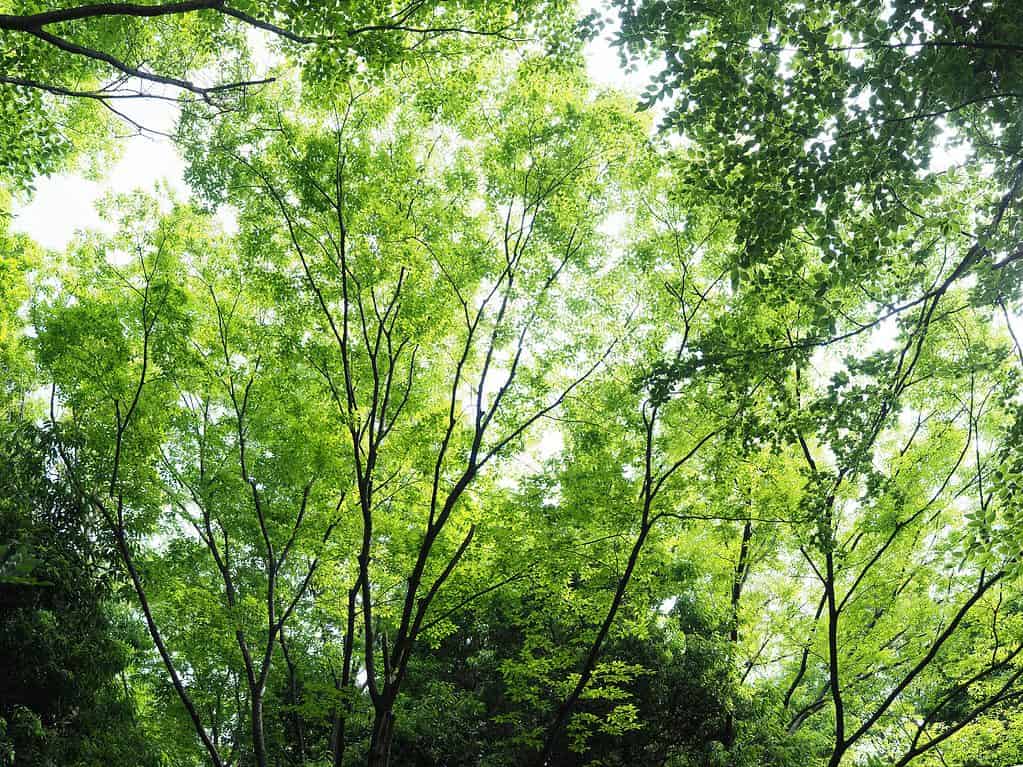
Japanese zelkova trees struggle with the cold, but they are quite resistant to Dutch elm disease, elm leaf beetles, and Japanese beetles.
©iStock.com/xie2001
3. Hinoki cypress
Hinoki cypress (Chamaecyparis obtusa), also called the Japanese cypress, is native to central areas of Japan. It is slow-growing but will eventually reach 115 feet tall. It has lovely red-brown bark and green leaves. The cones are about half an inch long.
The wood from the hinoki cypress is often used to build shrines, temples, and palaces. Some people also use it in baths because it is resistant to rot and has a fresh lemon scent.
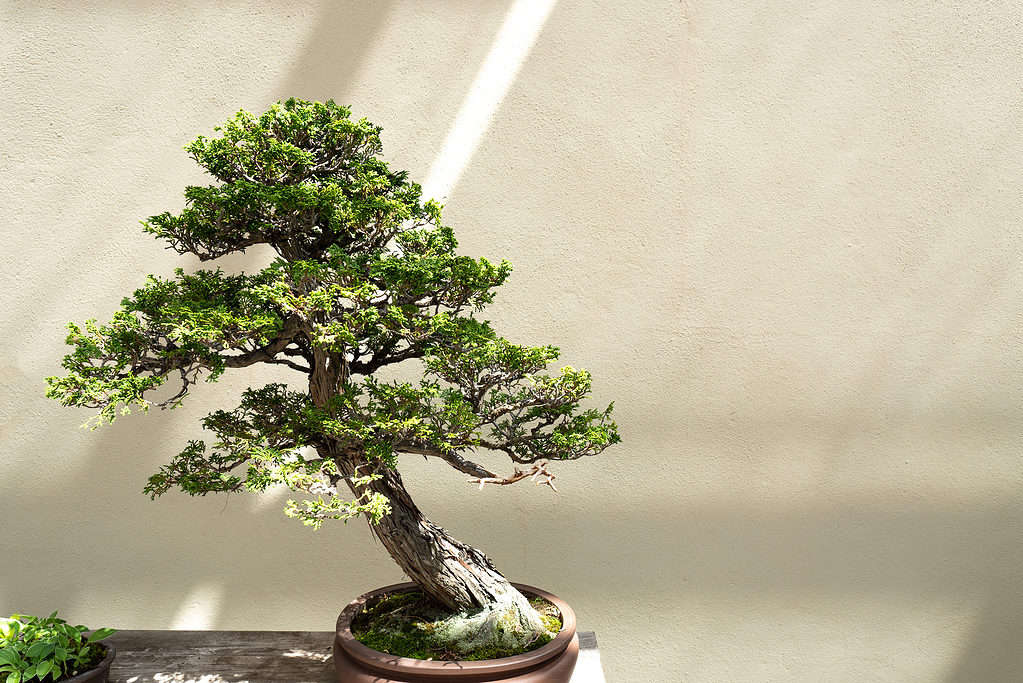
False cypress species, like
Chamaecyparis obtusa, are often used in the art of Japanese Bonsai.
©iStock.com/Renata Tyburczy
4. Japanese Cedar
Japanese cryptomeria (Cryptomeria japonica) — Sugi in Japan, and Japanese cedar in English — is a very large evergreen that grows to a towering height of up to 230 feet. The Japanese cedar has dark red-brown peeling bark and green needles. It grows happily in well-drained deep soil but is tolerant of poor soil or dry conditions. It is also an important food for the larvae of many species of moths.

Japanese cedar trees are commonly planted around temples and near shrines.
©iStock.com/MasahikoYamada
5. Japanese Red Pine
Japanese red pine (Pinus densiflora) has needles that are four and a half inches long and cones that are three inches long. It is a popular ornamental tree that grows up to 115 feet tall. It thrives in slightly acidic soil in an area with ample sunshine. This tree, called akamatsu in Japan, is an important timber tree and a common plant in a traditional Japanese garden.
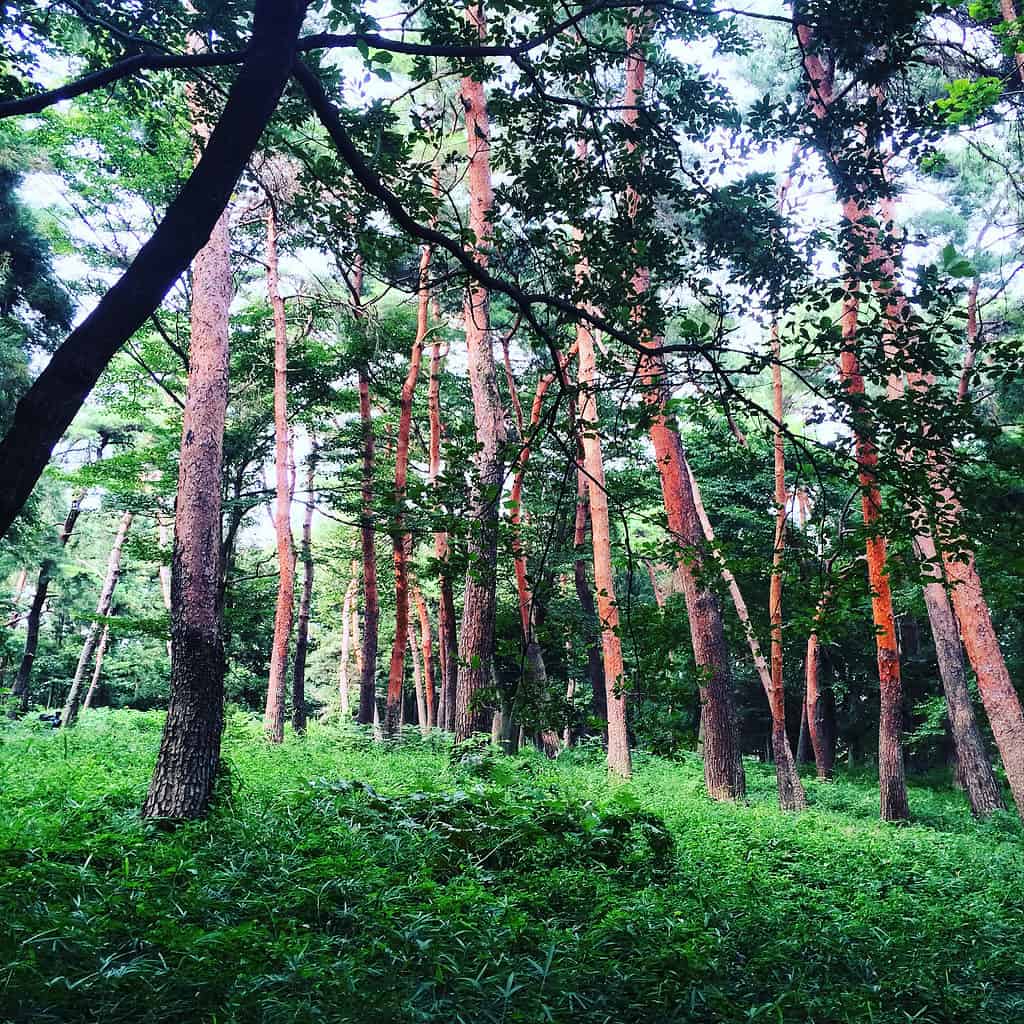
Japanese red pine trees are grown for timber, as well as in smaller versions as bonsai trees.
©iStock.com/harmonicform
6. Japanese Black Pine
Black Pine (Pinus thunbergii) or kuromatsu in Japanese, is native to the coastlines of Japan. It grows to 130 feet in ideal conditions, but the average height is 40-60 feet tall. The cones are about one inch long, and the new growth is bright green, making it an attractive bonsai tree.
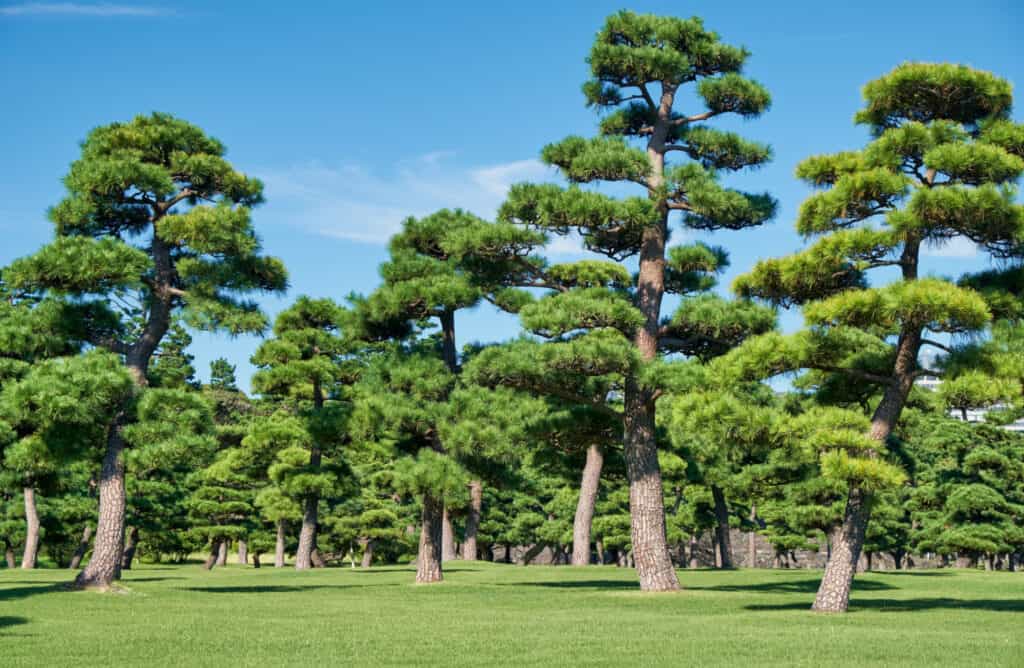
Japanese black pine trees are shaped with great patience.
©Serg Zastavkin/Shutterstock.com
7. Camphor
The camphor tree (Cinnamomum camphora) is native to southern Japan and has an amazingly long lifespan. Several camphor trees in Japan are more than 1,000 years old! They have lovely waxy leaves that are glossy and have a strong aroma. In the spring, they produce white flowers followed by dark berries.
Camphor trees are important and sacred to Japanese culture. Architects built the Kayashima Station around a sacred camphor tree that is 700 years old. During New Year celebrations, people write down their wishes for the following year and place them at the foot of camphor trees, creating a shrine of blessings for the year to come.
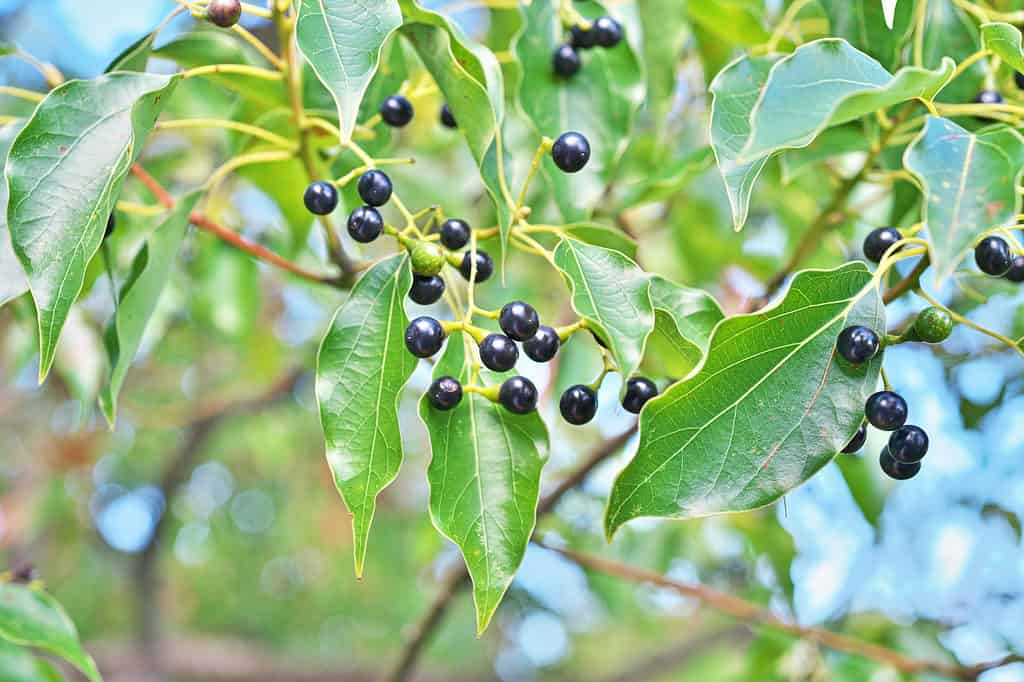
Camphor comes from the
Cinnamomum camphora treeand is used for incense, culinary spices, and medicines.
©iStock.com/igaguri_1
8. Japanese Chinquapin
The Japanese chinquapin (Castanopsis cuspidata) is native to Japan. It grows all over the southern part of the country, often near the sea. This medium-sized tree is evergreen, with leathery green leaves. The small seeds are edible and are a favorite food for local wildlife. After the trees die, they are host to many popular types of mushrooms.
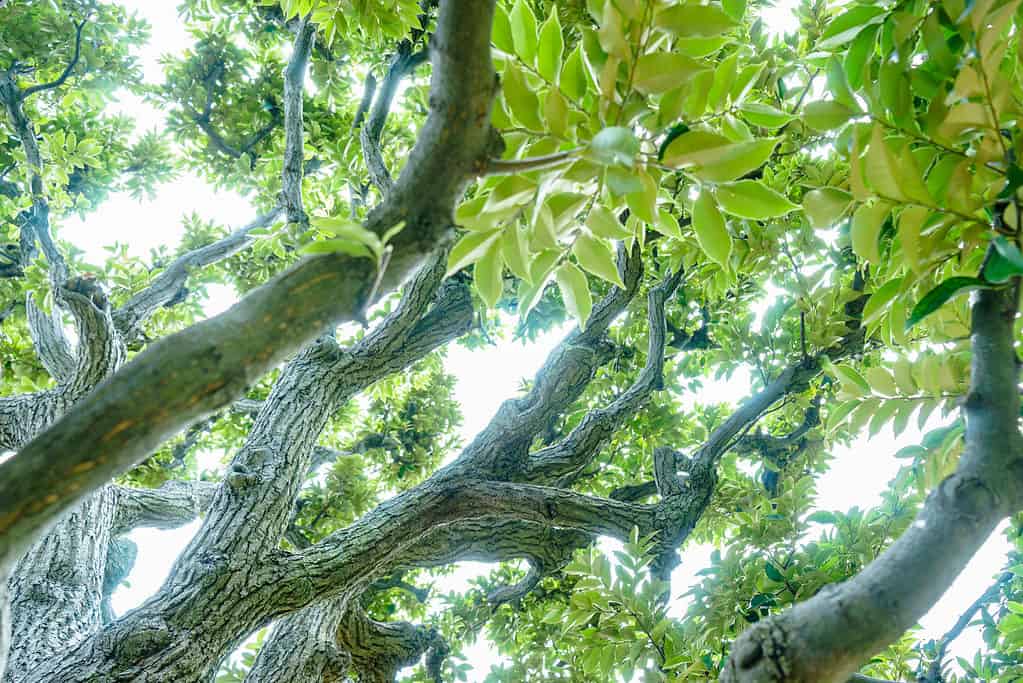
Japanese chinquapin trees have lovely drooping branches, young shoots covered with scurfy hairs, and leathery leaves.
©iStock.com/dar_st
Other Important Ancient Trees of Japan
There are many additional trees that did not originate from Japan but are integral to Japanese culture, gardens, and forests. Let’s look at a few examples:
Weeping Willow
The weeping willow (Salix babylonica) has been cultivated for millennia in Japan and China. These trees grow around 80 feet tall and turn golden yellow in the fall. During springtime, weeping willows produce catkin-like flowers that have a sweet scent.
The atomic bomb dropped on Hiroshima destroyed a famous weeping willow, only 0.2 miles from the center of the blast. The following spring, new shoots sprung from the earth directly from the tree’s underground roots, giving many people hope.
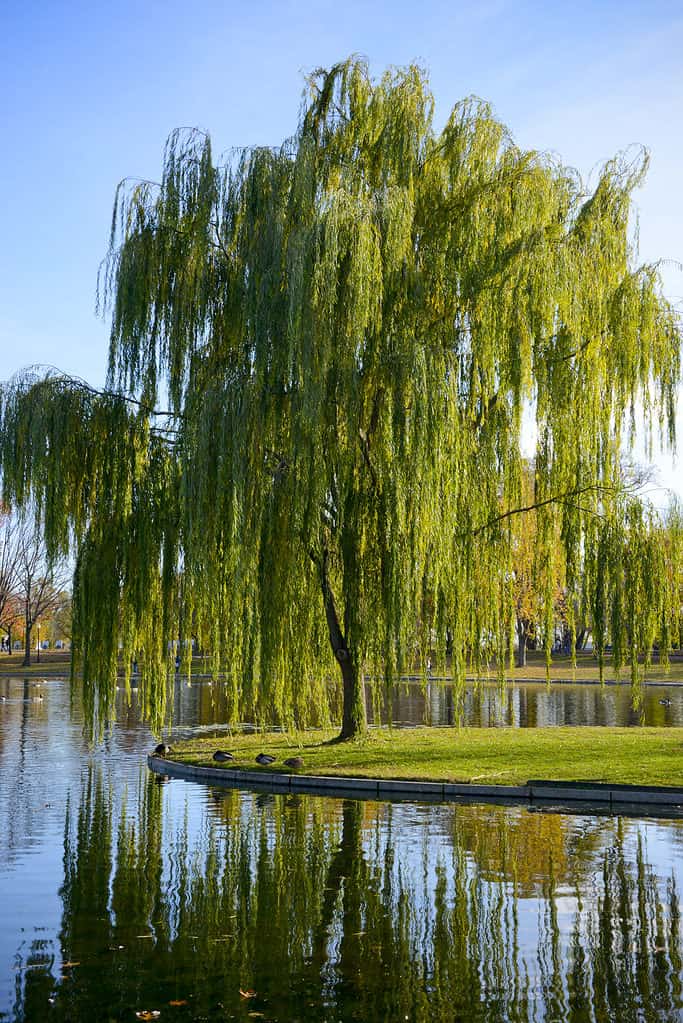
Known for its drooping branches and graceful appearance, Salix babylonica is an ancient species of willow that has been cultivated in
Asia
for millennia.
©iStock.com/merrilb
Ginkgo
Ginkgo (Ginkgo biloba) or maidenhair trees grow up to 115 feet tall and have long branches. The fan-shaped leaves are bright green in summer and turn golden in autumn. Gardeners love this tree because the leaves fall off all at once, making raking a one-time chore.
Ginkgo trees are native to China and have been cultivated for thousands of years. European botanists first recorded the tree in a Japanese temple garden in 1690, but it has been recorded in other texts as early as the 14th century. One famous ginkgo tree survived the atomic bombing of Hiroshima in 1945 at the Hosenbo Temple grounds. When they rebuilt the temple some 50 years later, the architects built the design around this resilient tree.
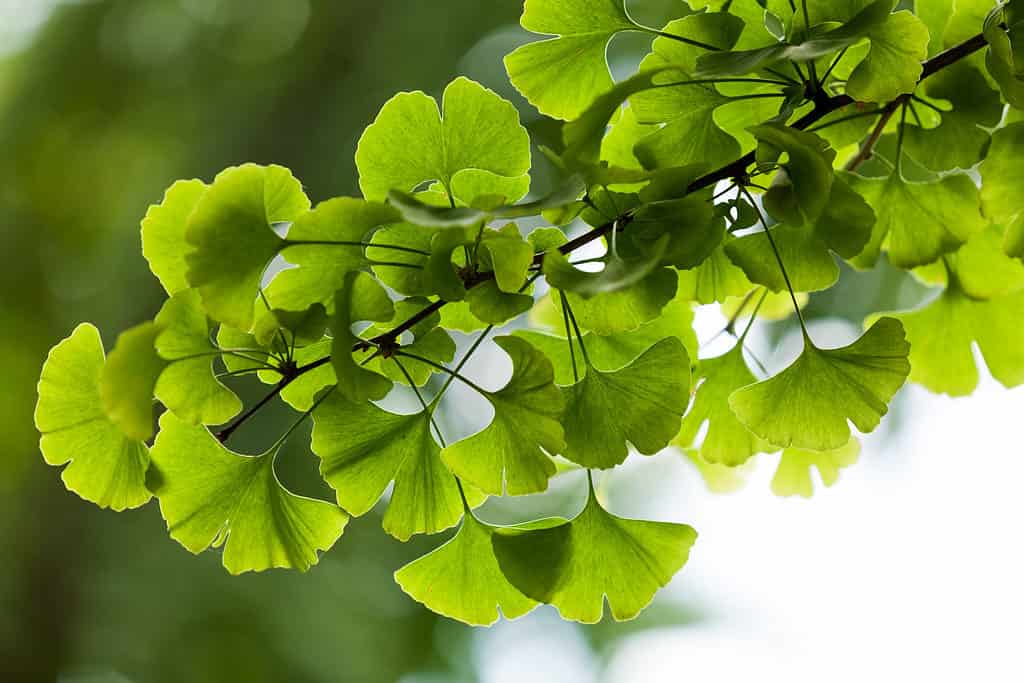
The ginkgo tree is often referred to as a ‘living fossil’ and is the oldest living tree in the world.
©iStock.com/v_apl
Summary of 10 Trees Native to Japan
- Japanese Cherry
- Zelkova
- Hinoki Cypress
- Japanese Cedar
- Japanese Red Pine
- Japanese Black Pine
- Camphor
- Japanese Chinquapin
Other Important Ancient Trees in Japan:
- Weeping Willow
- Ginkgo
The photo featured at the top of this post is © Serg Zastavkin/Shutterstock.com
Sources
- The Arnold Arboretum of Harvard University, Available here: https://arboretum.harvard.edu/stories/eternal-forests-the-veneration-of-old-trees-in-japan/
- JSTOR (Annales Botanici Fennici), Available here: https://www.jstor.org/stable/23725018
- Springer Link (Journal of Plant Research), Available here: https://link.springer.com/article/10.1007/BF02344534
Thank you for reading! Have some feedback for us? Contact the AZ Animals editorial team.






